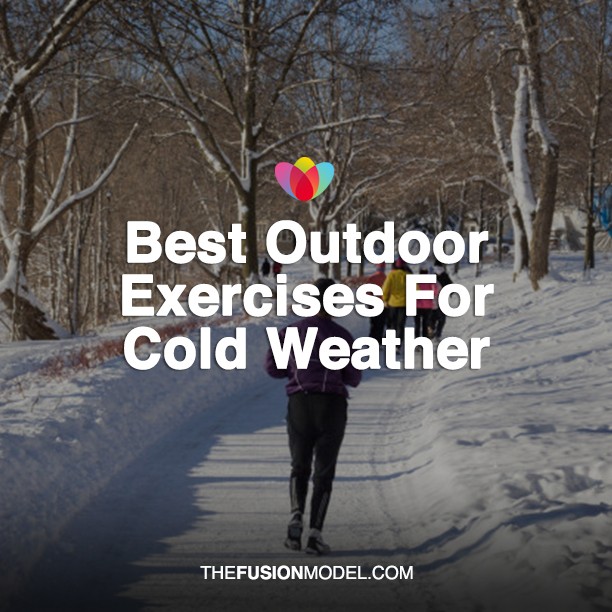Even if you’re a dedicated outdoor exerciser — the kind of person who wears shorts to run in 25-degree weather (guilty as charged) — winter can be a bummer. Ice, snow and plummeting temps make participating in sports like baseball, basketball, tennis, golf, cycling and even football near impossible, plus the dreary weather can suck away your motivation to work out altogether.
Meanwhile, popular winter pastimes such as downhill skiing and snowboarding, while a decent workout for the core and leg muscles, don’t always deliver that much bang for your buck — figuratively and literally. “Many cold-weather sports don’t involve aerobic exercise and thus don’t enhance cardiovascular fitness,” says New York Road Runners coach Stuart Calderwood. “That includes downhill skiing, snowboarding and other such gravity-propelled activities.” Convenience is also an issue: If those Alpine activities are to be viable as your everyday exercise, you have to live relatively close to a ski mountain and be willing to shell out money for your lift ticket and equipment.
Still, that doesn’t mean you have to cram into a sweaty, overcrowded gym to stay fit until the spring thaw. Here are our recommendations for getting your exercise fix in the great outdoors this winter… without freezing your cookies off (always a bonus).
Running
Why It’s Hot: For starters, running is cheap and simple. “You don’t need access to equipment like skis, a snowboard, a bobsled, or an ice-fishing shack to do it,” says Calderwood. “But a bigger positive is that cold doesn’t affect a runner as much as it does many other kinds of athletes, because running [like other exercise] produces significant body heat that can negate the effects of the cold.”
Fellow New York Road Runners coach John Honerkamp concurs. “In the cold weather you just need to add a few layers of clothing to the mix, and you can peel them off if you start to overheat,” he says. “Another win is that you don’t have to spend 15 minutes warming up the car for your drive to the gym. Running is very efficient in regards to time management — just lace up your shoes and get out the door.” Add to that the fact that running is an excellent source of cardiovascular exercise that naturally strengthens the core, increases overall fitness and burns up to 125 calories per mile, and you’re basically out of excuses to skip that jog… even if it is 20 degrees.
Word To The Wise: “The main danger in running in cold weather is black ice,” says Honerkamp. “If you can avoid the ice, you should be in the clear.”
Cross-Country Skiing
Why It’s Hot: Even a diehard runner like Calderwood, who hasn’t missed a day of running in more than 25 years, sings the praises of cross-country (or Nordic) skiing. “Unlike downhill skiing and snowboarding, cross-country skiing doesn’t rely on gravity to get you where you’re going — you have to do the work,” says Calderwood. “As a result, it’s as good or better than running as an aerobic activity.”
The average person can burn 500 to 640 calories an hour cross-country skiing according to WebMD, while working the thigh, calf and glute muscles — benefits it shares with running. But cross-country skiing does trump most other endurance exercises (including running and cycling) in one very important respect: It gives your upper body a workout as well, thanks to the use of poles to propel you forward.
What’s more, a 2013 study comparing two groups of 80-year-old men, one comprised of lifelong cross-country skiers and the other of healthy non-athletes, found that the cross-country skiers had the aerobic capacity of someone half their age, and possessed twice the cardiovascular and muscular fitness of their non-skiing counterparts. Sounds like there might be something to this cross-country skiing thing, huh?
Word To The Wise: Splurge for a decent pair of cross-country skis and find some nearby trails that you can hit whenever it snows. Not enough snow? You can always go for a run.
Ice-Skating
Why It’s Hot: Like cross-country skiing, ice skating is an excellent source of cardiovascular exercise that really builds the muscles of the lower body (hips, quads, hamstrings and calves) and core. It’s also low impact, so it’s easier on the joints than, say, running. And it enhances flexibility, balance, speed and dexterity — all of which come in handy when tackling other sports. It also burns roughly 600 calories an hour, which isn’t too shabby. Another bonus is that, if you’re itching to play a team sport, you can get friends together for an ice hockey game. The only downside to skating: You need access to a rink or other frozen surface.
Word To The Wise: When you skate on a lake or pond, make sure it’s duly frozen, and never go alone. Swimming in icy water with your skates and clothes is not a workout safe for anyone.
The Best Of The Rest
If you’re an avid skier or snowboarder, there’s good news. While not the best cold-weather activities for overall fitness, these activities do provide a good workout for the legs and a mild one for the core. And because you can burn up to 560 calories an hour skiing and 480 calories an hour snowboarding, you don’t have to feel guilty about knocking back a couple of after-ski beers by the fire afterward.




